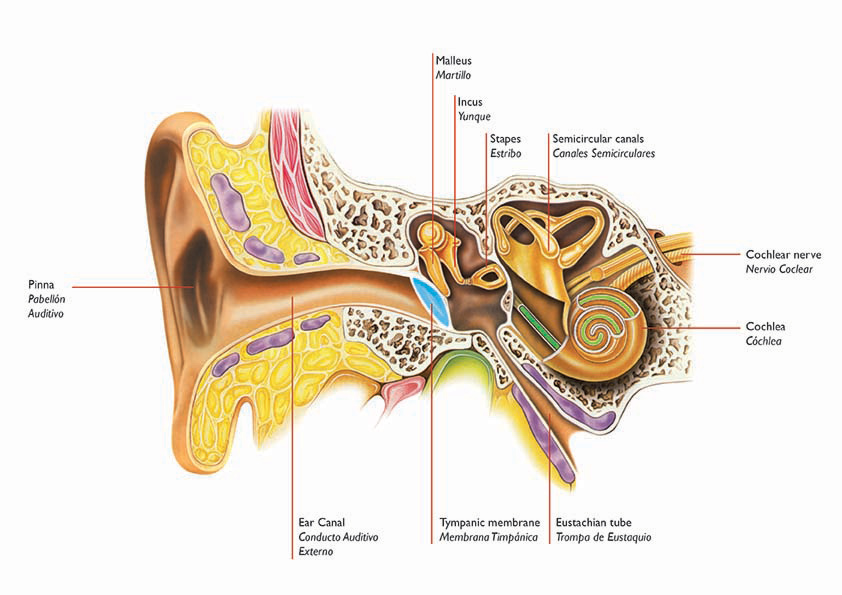The Human Ear
The visible part of the human ear is only a very small part of our ear and hearing system.
How Do We Hear
In audiology, we learn that the ear is actually an extremely complex organisation of bones, muscles, membranes, cells and nerves that form a pathway that leads to the brain. It is actually the brain that “hears” and not the floppy structures on the side of our heads.
How the Ear Works:
1. Sound Collection:
Outer Ear (Pinna): Captures sound waves and directs them into the ear canal.
2. Sound Transmission:
Ear Canal: Channels sound waves to the eardrum.
Eardrum (Tympanic Membrane): Vibrates in response to sound waves
3. Sound Amplification:
Middle Ear: Consists of three tiny bones (ossicles: malleus, incus, stapes) that amplify and transfer vibrations from the eardrum to the inner ear.
4. Sound Conversion:
Inner Ear (Cochlea): Converts vibrations into electrical signals. The cochlea’s hair cells detect vibrations and send signals through the auditory nerve.
5. Signal Processing:
Auditory Nerve: Transmits electrical signals to the brain, where they are interpreted as sound.
This process allows us to perceive and understand sounds from our environment.

